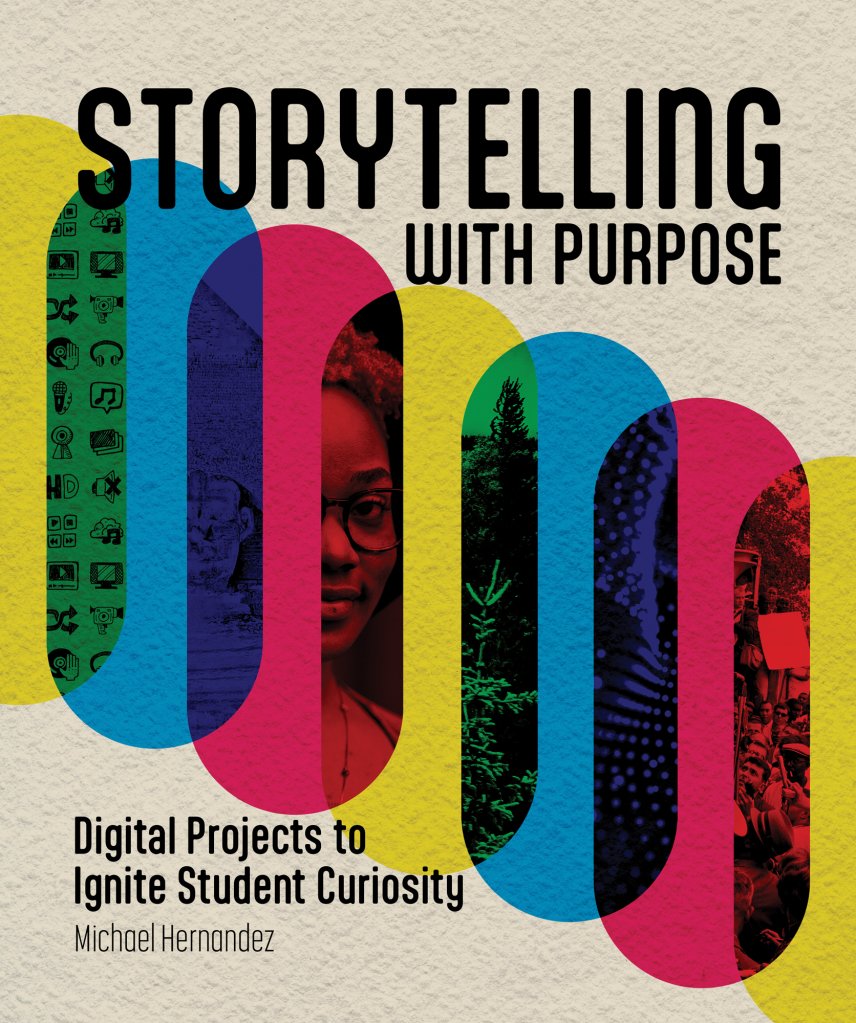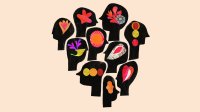Guiding Students to Use Storytelling Across the Curriculum
Teachers in any subject can have students use storytelling techniques to demonstrate learning, and these story generation strategies can help them get started.
Your content has been saved!
Go to My Saved Content.One of the most important steps in the storytelling process is the first one: helping students decide which story to tell. This not only affects their engagement throughout the learning process but also asks them to think critically about what they value and to see the importance of paying attention to the world around them.
In this chapter, I share some of my favorite activities for developing story topics and provide advice on how to make choices about which story to tell.
You Are What You Consume: A Storytelling Audit
Our relationship to story says a lot about who we are and the kinds of stories we choose to tell. What we consider to be a “good” story is often a result of our personality, culture, age, gender, race, experience, and a variety of other traits. There are also subtle, often unrecognized factors that affect which stories we consume and how we evaluate them, such as advertising and social factors like recommendations from friends.

Helping students become aware of the types of stories they currently consume enables them to recognize personal tastes and find biases that might later affect their decisions about which stories they choose to tell and which people and information they include in their projects.
Have students keep track of stories of all kinds that they consume, either actively, like when they choose to watch a YouTube video, or passively, like hearing ads in the background. Then have them respond to these questions:
- What kinds of stories do you typically like, or keep coming back to? Which ones do you avoid?
- What stories do you have access to? Why?
- Who or what is a gatekeeper, controlling the stories you experience? (Parents, schools, etc.?)
What might limit your ability to experience certain stories (language, time zones, age, technology, cost, vision or hearing abilities, neurodivergence, etc.)?
Then have students think about the authors of these stories:
- Who created the stories you experience? Describe their demographic traits, such as gender, age, country of origin, race, etc.
- What are their motivations for telling you these stories? What’s in it for them? What do they want us to do with this information?
- What are some potential biases that affect which stories they tell us and what information or perspectives they choose to include?
- How do they get their stories to you (social media, word of mouth, etc.) and what are the costs associated with accessing these stories (owning a mobile device, registering for a social media account, paying for a streaming service, watching ads, etc.)?
Have students discuss their reflections and debrief on what they think this might mean for their own knowledge about the world and other people. How do these insights affect how they will create and share their own stories?
Where Do Good Stories Come From?
Good story topics don’t drop out of the sky. They often require an experience or artifact to trigger an emotional or intellectual response that students can eventually develop into a story. There is no one right way to generate story ideas, but the best we can do is give students time to process and reflect on these triggering moments to turn their personal reactions into a powerful engine for learning.
Teacher- vs. student-generated topics. Honoring self-determination is key to developing students who are independent thinkers, and it helps create a culture of professionalism and respect in the classroom. Inviting students to have a say when making choices about their academic work not only helps them make personal connections to our curriculum, but it also offers opportunities for them to develop high-level critical-thinking skills. And it embraces the concept that there is more than one way to solve a problem.
A data visualization project, for example, might be created around collecting samples as part of a unit about learning scientific research methods. Student choice might mean anything from deciding which phenomenon to collect data about, determining where and how to take samples, figuring out how to choose the most relevant data set to use, and making design decisions about colors and fonts when creating the chart or graph.
Be transparent and share your goals with students so they can understand your decision-making process, including criteria for choosing story topics. Having guidelines keeps projects on track and manageable and can also serve as a creative challenge.
Topics vs. themes. Giving assignments typically means asking students to work within a defined space, often called the topic. But I find that topics tend to put external limits on how students think about a subject, such as a definition, time period, or genre. Instead, I like to challenge students with themes, which are open-ended prompts that tend to spark a more creative way to think about a subject and always lead to a more intriguing result.
While topics can be useful for developing fundamental knowledge and checking for learning, themes invite students to perceive, interpret, or understand a topic in unique ways, thereby activating higher-level thinking and allowing for more flexibility, personalization, and originality.
Open-ended themes allow intellectual flexibility in how students will make decisions about their story projects and also help them grapple with the curriculum in ways that make the most sense for them. These are some themes I’ve used before and descriptions that help students get started:
- In the Shadows. What is unknown or hiding? Why are people or places marginalized? What is lurking in your heart or mind that is afraid to see the light of day? Where have we not yet traveled to or discovered?
- Inside Out. Is what you seek really there? Expectations turned upside down. What’s on the surface and what’s beneath?
- Not What You’d Expect. Preconceived ideas. Stereotypes. Decisions that turned out better than you thought they would. People who surprised you (in good ways). What happens when you’re wrong?
Story Generation Techniques
Great ideas don’t miraculously appear on demand while sitting in class. They are born from interactions with people, places, and ideas and when we have a mindset that is receptive to new and surprising concepts wherever and whenever they may happen.
Collecting ideas: Wonder journals and media logs. My friend and middle school science teacher Leah Lacrosse encourages her students to be curious 24-7 by having them keep Wonder Journals, a collection of ideas, questions, observations, and conversations they continually gather while at school or at home. To enhance creative writing, my cinema students keep dream journals—descriptions of dreams, observations of life, and other creative fragments that appear throughout the day.
Journals can be physical notebooks or digital ones that can capture images, sound, and video. Older students might also collect online articles and resources they encounter by adding them to a media log spreadsheet. Any of these ideas could help support a current project or become the seed of inspiration for a future one.
Idea safaris. Walking explorations of a particular place, or Idea Safaris, leverage the novelty of seeing something for the first time to spark the imagination and generate ideas for stories. Have students look for details related to your curriculum or story topic, such as sensory details for a poetry unit, sign fonts for a design project, or frequency and repetition for a math assignment. Debrief with students by having them share their findings in small groups or with the entire class. This can help validate students’ experiences and help them see the value of unique observations and perspectives of others.
While on safari, students can write or record observations and collect data, such as:
- light, temperature, materials, languages, sounds
- emotional reactions/feelings about these places and the people they meet
- questions that come up as they make their observations
Safaris can be formally structured by providing specific routes or questions for students, or they can be informal routines that students perform regularly. If you don’t have the time or budget for a field trip, even regular experiences like the commute to and from school can be an opportunity for an Idea Safari. For example:
- Take a different route to and from school. What do you notice now that you didn’t before?
- Sit in a different part of the bus/train/car that you take to school. How is your view different? How are the people or places you see different than before?
- Make a map of your most traveled routes around campus or the places you most often visit. Make it a point to change your route and visit other places at school you haven’t been to before.
Salons and hackathons. For centuries, artists, politicians, and intellectuals have held salons—intimate gatherings of people where they discuss topical issues. More recently, web and app developers started holding hackathons to generate solutions to bugs or develop new features. Create your own salons by inviting community members to visit classes or by hosting online webinars with authors and experts around the world via video conferencing tools.
Innovators’ compass. This design thinking tool, developed by former IDEO strategist Ela Ben-Ur, helps students clarify goals and purpose, generate ideas, and make decisions about which ideas to use. This is a great tool for developing story ideas because it centers ideas on the audience (end user), has students reflect on the current state of the community, encourages them to dream big, and provides ways to prioritize ideas based on the question: What matters most? Use it as a flexible framework at any stage of the storytelling process, from generating the main story topic, all the way down to specific choices about design or where and when to publish.
Use research to help students find their passion. Inviting students to create a story based on their research means asking them to pay attention to the world around them and helps them see the value of experts. It also honors their natural sense of curiosity by allowing them to embrace their interests and to evaluate what matters most.
As students conduct research for their projects, have them answer these questions about their findings:
- What facts or information surprised you? Why is it so surprising?
- What, if anything in your research, challenges what you already knew about this topic?
- Out of all your findings, what matters most to you? What might matter most to other people?
- How has your thinking about this topic changed now that you have this new information?
Empathy interviews. We don’t know what we don’t know, so ask someone who does. Even scientists, journalists, and businesspeople start from a place of ignorance and need help figuring out what their project should focus on and what information they might need to solve a problem.
A great place to start any story project is with empathy interviews, conversations that students have with someone knowledgeable about a topic so they can get a better sense of its history and context. These are called empathy interviews because they help us understand—or empathize with—stakeholders of a topic. They help students determine what they should research, which experts they might speak with, and potential questions to ask during interviews. They also help reveal students’ blind spots so stories can be inclusive, provide context, and be faithful to historical fact.
Excerpted from Storytelling With Purpose, copyright 2024, Michael Hernandez, ISTE.
